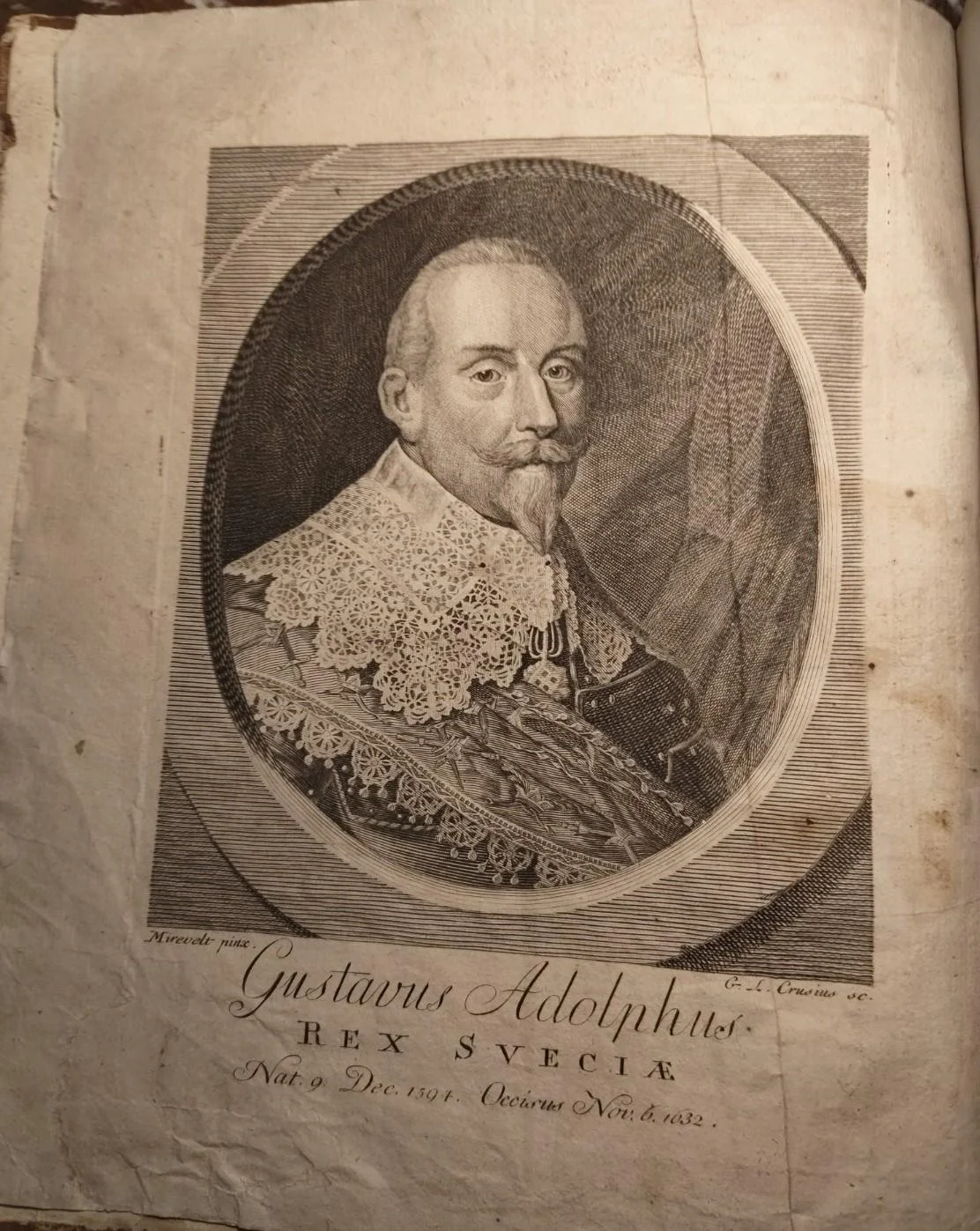 Image 1 of 10
Image 1 of 10

 Image 2 of 10
Image 2 of 10

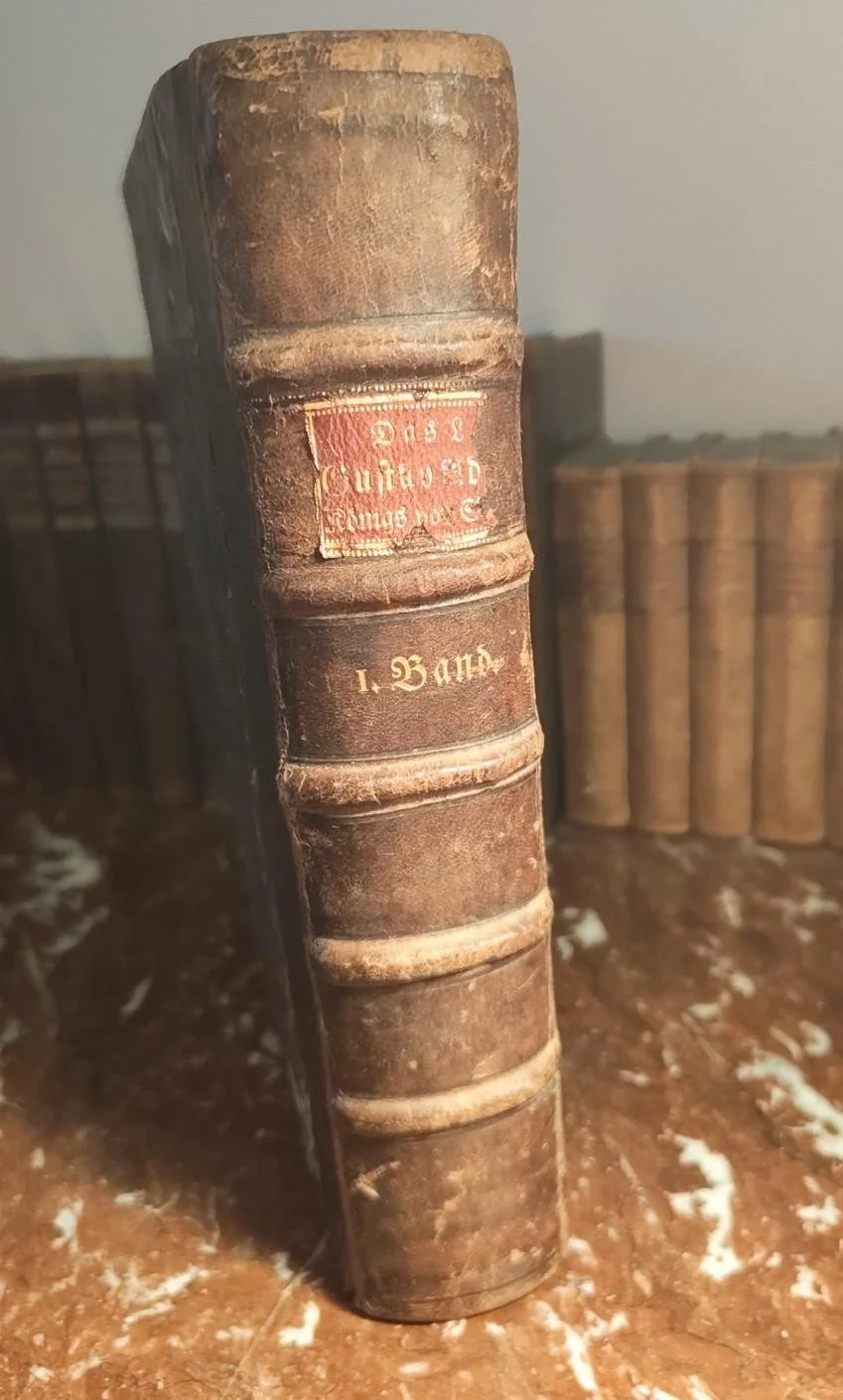 Image 3 of 10
Image 3 of 10

 Image 4 of 10
Image 4 of 10

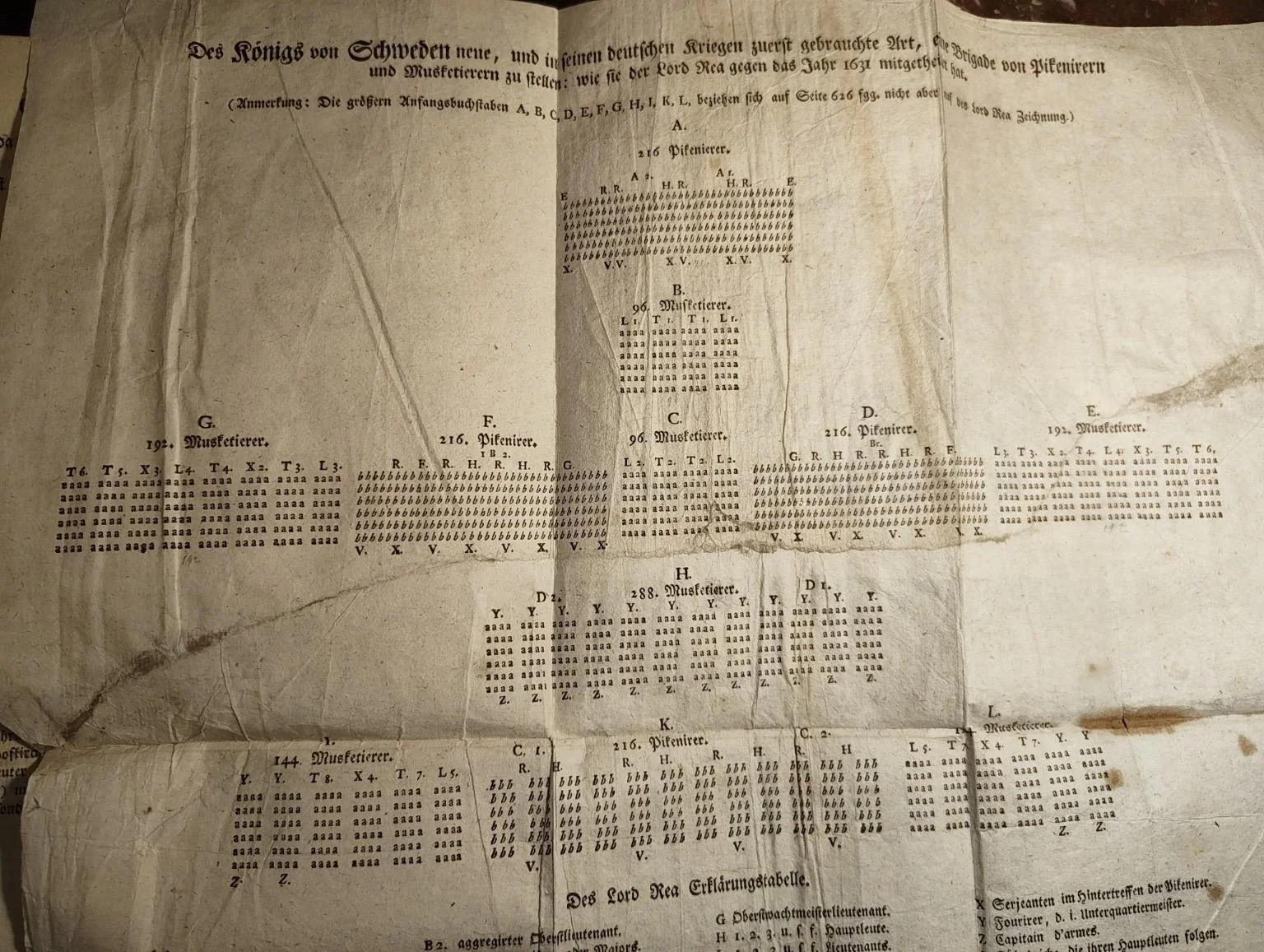 Image 5 of 10
Image 5 of 10

 Image 6 of 10
Image 6 of 10

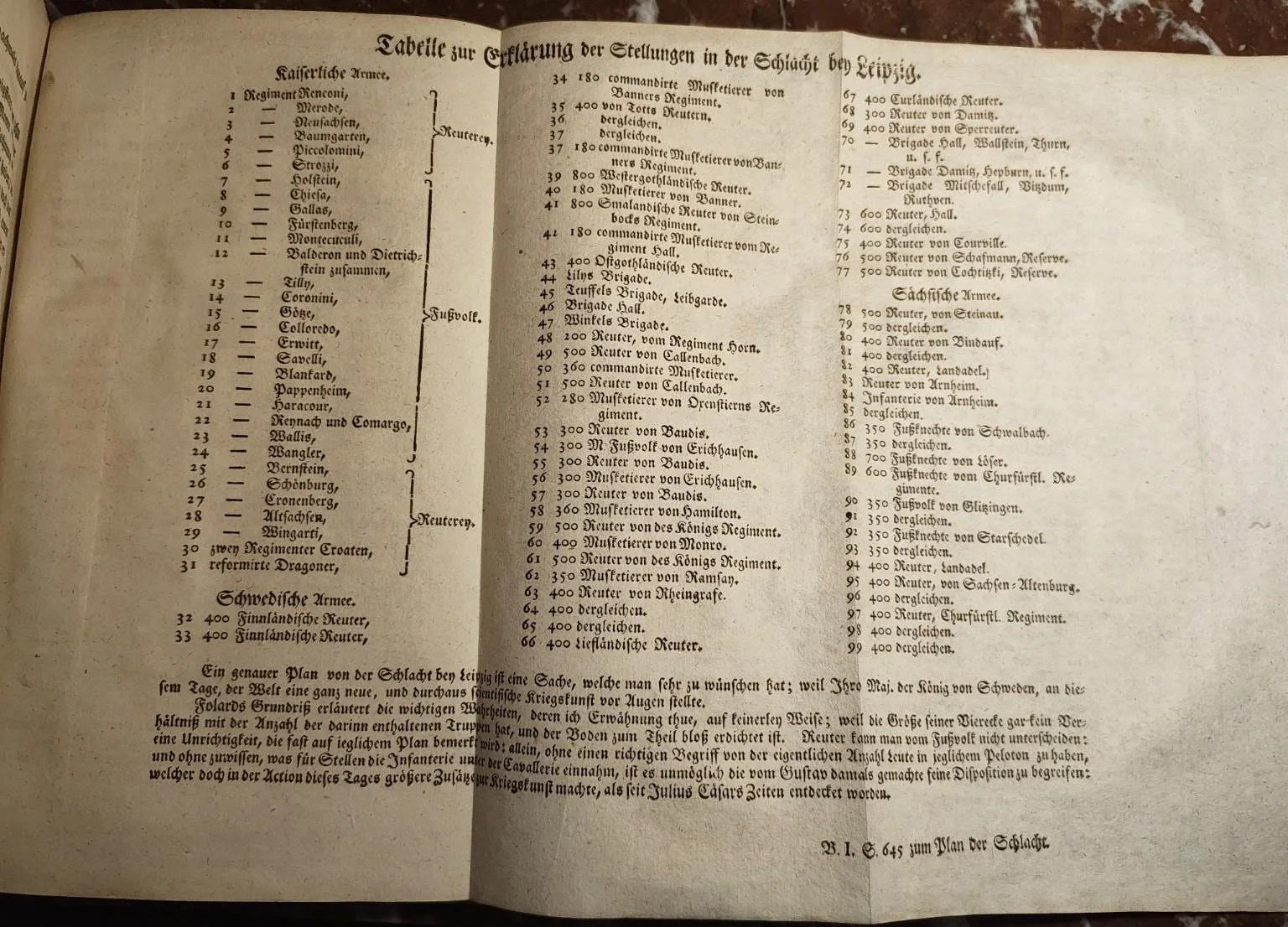 Image 7 of 10
Image 7 of 10

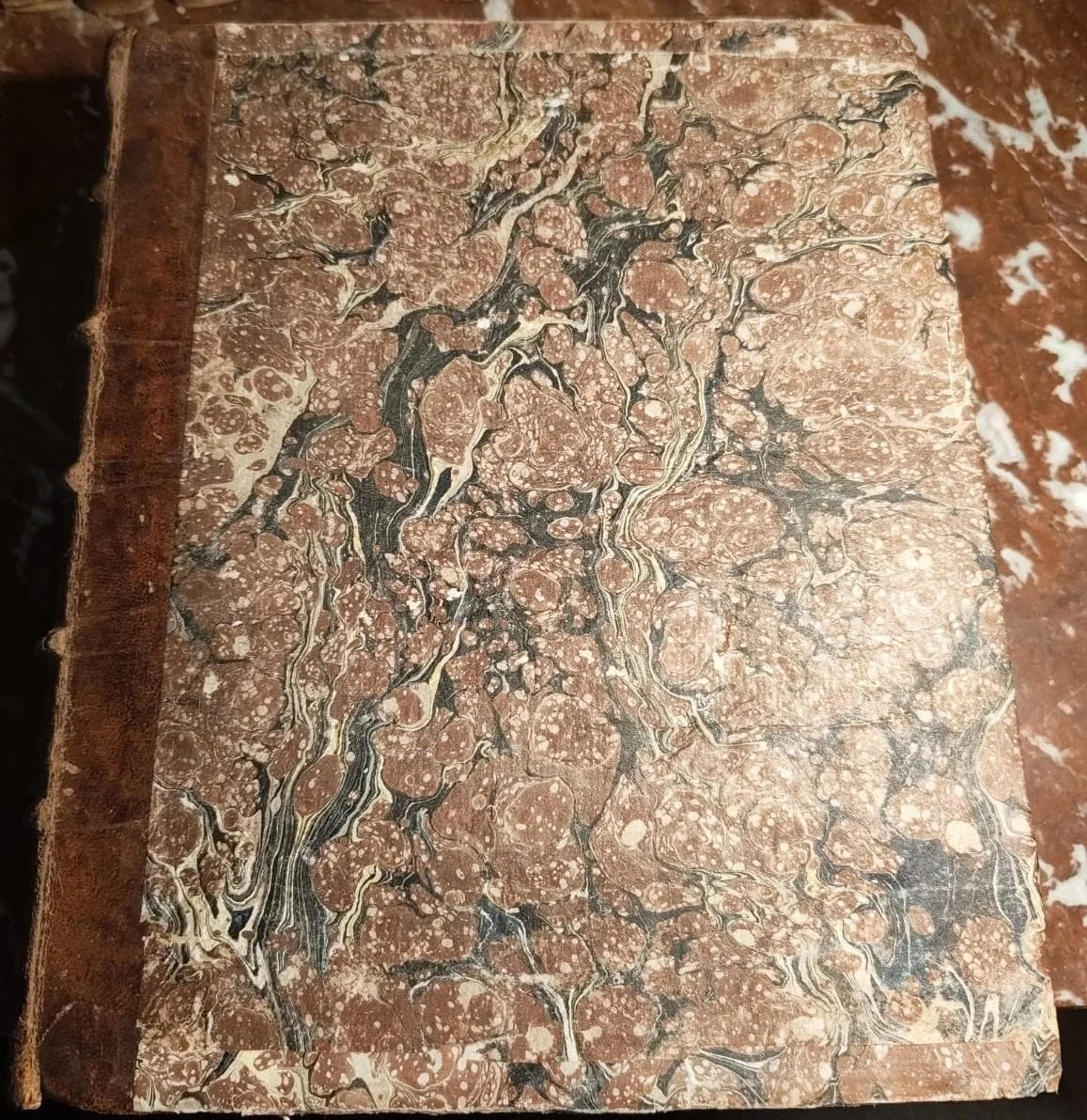 Image 8 of 10
Image 8 of 10

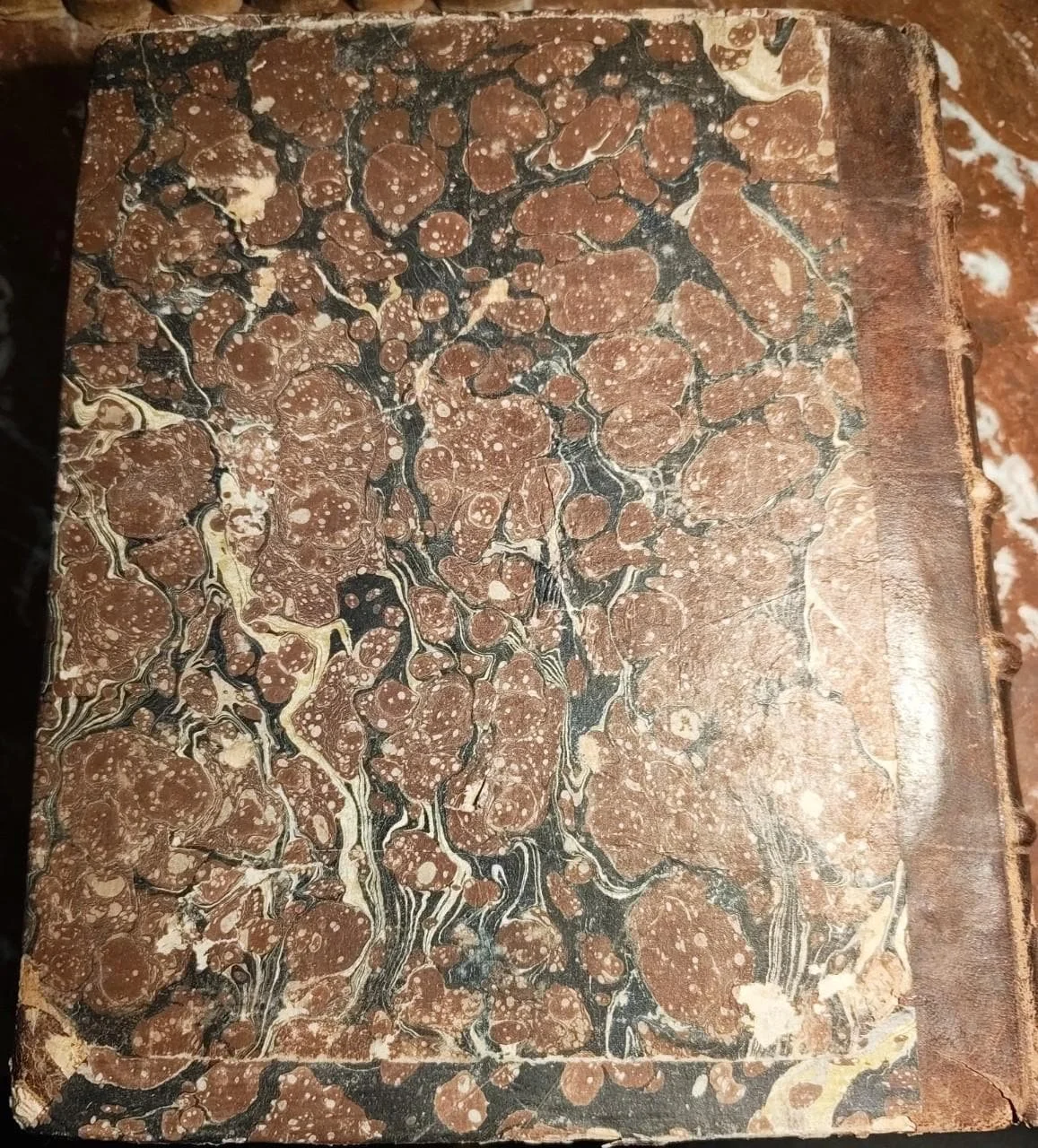 Image 9 of 10
Image 9 of 10

 Image 10 of 10
Image 10 of 10











Das Leben Gustav Adolphs des Großen, Königs von Schweden. Walter Harte. Leipzig, 1760. German Biography with Fold-out Campaign Maps
This substantial 1760 Leipzig biography of Gustav II Adolf presents one of the most influential studies of the Swedish warrior-king to emerge from the Enlightenment. Originally written by the English historian Walter Harte and translated into German by G. H. Martini, the text is here expanded and annotated by the Leipzig scholar J. G. Böhme, giving it a distinctly continental perspective on the Thirty Years’ War.
Gustav Adolph and the European imagination of the Enlightenment
By the mid eighteenth century, Gustav II Adolf’s campaigns were regarded as a turning point in European statecraft and military organization. This German edition reflects both the admiration and the analytical precision of the era. Harte’s narrative, enriched by Böhme’s notes, situates the Swedish king within a larger intellectual and geopolitical framework, presenting him as a model of Protestant leadership and as a strategist whose innovations reshaped early modern warfare.
The engraved portrait and large fold-out maps bring this history to life, tracing the Swedish army’s movements across Germany and illustrating key battles in striking detail.
Illustrations, maps, and continental craftsmanship
This first volume (Band I) includes
• an engraved frontispiece portrait of Gustav II Adolf
• four folding campaign maps
• two folding battle plans and charts
Printed by Johann Gottfried Dyck, the book shows the clarity and typographic strength characteristic of Leipzig printing during the period. The generous quarto format allows the maps to be displayed with impressive scale.
Physical description
Contemporary half calf with gilt-labelled spine and marbled boards.
Quarto format, approximately 25 × 20 cm.
Pagination: 1–722, complete for Band I.
Text in German.
Wide margins, clean impressions, and strong paper quality typical of mid eighteenth century academic publishing.
Condition
A solid and complete antiquarian copy.
The binding shows gentle wear to edges and joints, but remains structurally sound.
Foxing and light age toning throughout, consistent with period paper.
All fold-out maps and plans present, some with light browning at the folds.
Engraved portrait crisp and well preserved.
A very good survival for a quarto of this size and use.
Why this book matters
This Leipzig edition stands at the intersection of English historiography, German scholarship, and Swedish royal history. It offers
• one of the most detailed eighteenth century accounts of Gustav II Adolf
• contemporary military cartography in large fold-out format
• an excellent example of Leipzig scholarly printing at its height
For collectors of military history, early modern European politics, Swedish royal studies, or eighteenth century illustrated books, this is a distinguished and impressive volume.
This substantial 1760 Leipzig biography of Gustav II Adolf presents one of the most influential studies of the Swedish warrior-king to emerge from the Enlightenment. Originally written by the English historian Walter Harte and translated into German by G. H. Martini, the text is here expanded and annotated by the Leipzig scholar J. G. Böhme, giving it a distinctly continental perspective on the Thirty Years’ War.
Gustav Adolph and the European imagination of the Enlightenment
By the mid eighteenth century, Gustav II Adolf’s campaigns were regarded as a turning point in European statecraft and military organization. This German edition reflects both the admiration and the analytical precision of the era. Harte’s narrative, enriched by Böhme’s notes, situates the Swedish king within a larger intellectual and geopolitical framework, presenting him as a model of Protestant leadership and as a strategist whose innovations reshaped early modern warfare.
The engraved portrait and large fold-out maps bring this history to life, tracing the Swedish army’s movements across Germany and illustrating key battles in striking detail.
Illustrations, maps, and continental craftsmanship
This first volume (Band I) includes
• an engraved frontispiece portrait of Gustav II Adolf
• four folding campaign maps
• two folding battle plans and charts
Printed by Johann Gottfried Dyck, the book shows the clarity and typographic strength characteristic of Leipzig printing during the period. The generous quarto format allows the maps to be displayed with impressive scale.
Physical description
Contemporary half calf with gilt-labelled spine and marbled boards.
Quarto format, approximately 25 × 20 cm.
Pagination: 1–722, complete for Band I.
Text in German.
Wide margins, clean impressions, and strong paper quality typical of mid eighteenth century academic publishing.
Condition
A solid and complete antiquarian copy.
The binding shows gentle wear to edges and joints, but remains structurally sound.
Foxing and light age toning throughout, consistent with period paper.
All fold-out maps and plans present, some with light browning at the folds.
Engraved portrait crisp and well preserved.
A very good survival for a quarto of this size and use.
Why this book matters
This Leipzig edition stands at the intersection of English historiography, German scholarship, and Swedish royal history. It offers
• one of the most detailed eighteenth century accounts of Gustav II Adolf
• contemporary military cartography in large fold-out format
• an excellent example of Leipzig scholarly printing at its height
For collectors of military history, early modern European politics, Swedish royal studies, or eighteenth century illustrated books, this is a distinguished and impressive volume.

